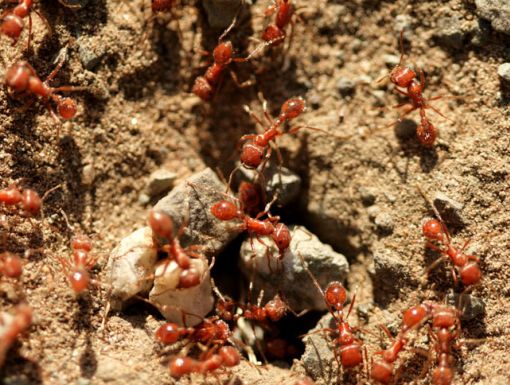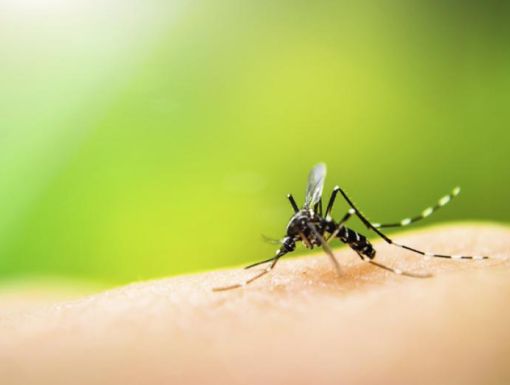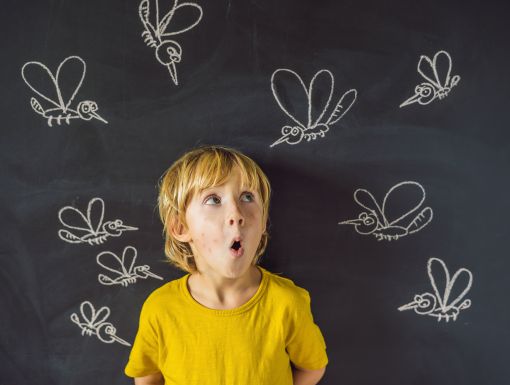
How to Treat Head Lice
Your child is sitting at the kitchen table, eating breakfast, and you notice something: He’s scratching his head. A lot. Or, your child might be having trouble sleeping because she feels a ticklish or itchy feeling on her scalp. You might not think much about it at first, but then it dawns on you: Could my child have head lice?
What do head lice look like?
If you get close to your child’s head and part the hair, you may see the telltale signs of these parasitic insects, although it is sometimes mistaken for dandruff. Check carefully around and behind the ears and at the base of hairline on the neck, where lice are most commonly found. Head lice also can live in your eyebrows or along your eyelashes, although this is uncommon.
There are three stages in the life of a louse: egg, nymph and adult insect. The eggs are tiny and either white or yellow, firmly attached to a shaft of hair close to the scalp. Lice eggs take eight to nine days to hatch. A nymph is a young louse that has hatched from an egg and looks like the adult louse. An adult is about the size of a sesame seed. The nymph becomes an adult in nine to 12 days. Lice have six legs, and they are either tan or grayish-white. An adult louse can live about a month on a human head. They cling tightly to the scalp with tiny hook-like claws.
If I think my child has lice, what should I do?
Roll up your sleeves because you’ve got some work to do!
Treat the child:
- Call your pediatrician’s office and ask which method they recommend for treating lice and if your child needs to be seen in person. Your child’s doctor may prescribe a lice treatment, or suggest an over-the-counter treatment. Follow the instructions carefully on the product information label for applying the treatment.
- Eight to 12 hours after treatment, check to see if you see any lice moving on your child’s scalp. Comb any dead or remaining live lice and nits out of your child’s hair with a fine-toothed nit comb. (Heard of the phrase “nitpicking’’? This is where it comes from!) This process can take a while, so make sure your child has something entertaining to do, such as watching a movie, while you comb out the lice. Take your time combing out the nits. This step is crucial to avoiding reinfestation.
- If the lice seem just as active after treatment as they were before, call your provider’s office again. Your child’s doctor may prescribe a different treatment if the first treatment didn’t work. Follow the instructions carefully on the package.
- Use the nit comb on your child’s hair again to continue removing remaining lice and nits. Continue to examine your child’s hair for live lice.
- Some products require retreatment a week after initial treatment to kill any remaining newly hatched lice. Follow your doctor’s instructions and the package instructions on the treatment carefully.
Examine the family:
- Lice spread easily. All family members should be checked to make sure they do not also have lice. If they do, they should be treated also.
Housework:
- Lice can’t survive long after they fall off the human head, but it’s a good idea to follow these steps to eliminate lice that might have fallen off your child’s head and could potentially cause a reinfestation.
- Machine wash and dry your child’s bedding and stuffed toys that he or she sleeps with, as well as clothing worn around the time of the infestation.
- Items that can’t be machine washed can be dry cleaned or sealed in plastic bags for two weeks.
- Soak combs and hairbrushes in hot water for five to 10 minutes.
- Vacuum floors and furniture.
Who’s most at risk for head lice and how are they spread?
First off, know this isn’t an indictment of your housekeeping abilities. Personal hygiene or household cleanliness have nothing to do with how lice are spread.
Lice don’t hop or fly; they crawl. Lice most commonly spread when one child’s head touches another child’s head, and the lice crawl from one head of hair to another. This can happen at school, daycare, sports or slumber parties.
Less common ways lice spread are by sharing hats, wigs, towels, hair accessories, scarves or coats. Dogs and cats do not spread head lice.
Preschool and elementary school-aged children in the United States are most at risk. Lice are common. The Centers for Disease Control estimates 6 million to 12 million children ages 3 to 11 get head lice each year in the United States.
When can my child return to school?
Check with your school or daycare to determine the school’s lice policy. While schools often have no-nit policies, the American Academy of Pediatrics and National Association of School Nurses discourage such policies and believe a child should not miss or be excluded from school because of head lice. Often, children can have dead remnants of lice in their scalp even after successful treatment. Parents can contact their pediatrician for a return-to-school note but remember that pediatricians do not control a school’s policies and procedures.
Learn more about pediatrician Elizabeth Jeanne-Anne Moore, MD



